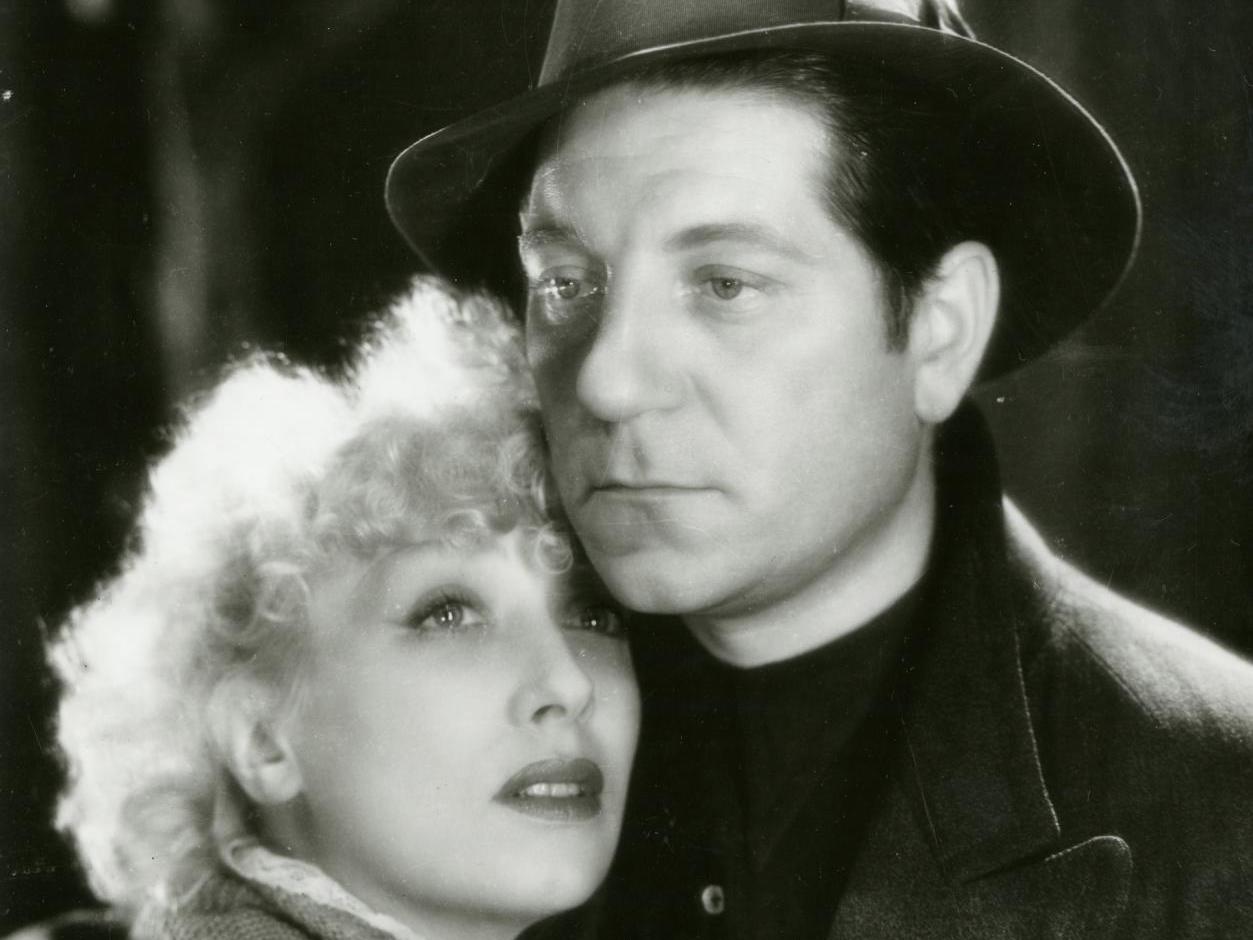
Based on Maxim Gorki’s novel, the hugely popular Les bas-fonds, made in the heady, optimistic spirit of the Popular Front, testified to Renoir’s commitment to the Left. Gabin plays Pépel, the working-class hero who rids his proletarian community of their exploiter, the repellent Kostilev (Vladimir Sokoloff) and at the end hits the road with his sweetheart Natacha (Junie Astor), in a tribute to Chaplin’s Modern Times.
EN
“With the exception of The Rules of the Game, The Lower Depths is perhaps the most interestingly directed of all Renoir's French films. It embodies the director's most delightful and revealing qualities... [An] improbable game of hide-and-seek between vaudeville and tragedy, realism and parody.”
André Bazin1
“Une partie de campagne and Les bas-fonds, both made in 1936, illustrate what I mean when I think of the relationship between a film script and the direction of the film. It is a relationship characterized by an apparent lack of fidelity. [...] The script which Charles Spaak and I produced differed considerably from Maxim Gorki’s story, so we submitted it to Gorki for his approval. His reply was a letter in which he declared himself in favour of free adaptation and said that he entirely approved of what we had done.
Rehearsals consisted in seating the actors round a table and getting them to read their lines without any expression whatever – the text should be read as tonelessly as if it were the telephone directory. What happens is that the actor learns his part in this way, denying himself all reaction until he has explored all the possibilities of every phrase, every word and every gesture. Actors who try to interpret their role from the outset are very apt to fall into the commonplace. [...] So we get together, actors and director, and we go through the text two or three or even twenty times. And suddenly, in this lifeless reading of the lines, the director discovers a tiny spark. That’s it! Starting from there the actor has a chance to achieve an original interpretation of the role. It is a magical procedure, and it seldom fails. [...] In a word, I believe that artistic creation must be centripetal before it becomes centrifugal.
In every successful film there is one scene to which its success may be attributed; but it is impossible to tell in advance which scene this will be. It is a sort of key that opens a locked door. (...) In Les bas-fonds the key scene in question [an improvised addition on the set], was the one which I called the ‘snail scene’. [...] While The Baron is talking, he notices a small snail climbing up a blade of grass. He picks it up and sets it to climb up his finger. I have been present at numerous public showings of Les bas-fonds and have never known that scene to fail. When the snail begins to climb Jouvet’s finger the audience warms and one senses their passionate interest in the movements of the snail. The Baron becomes familiar to them and they identity themselves with Gabin in listening to his story.
Les bas-fonds was my 19th film. After 12 years’ experience, reverses and successes, I was beginning to feel that I knew something about my business.”
Jean Renoir2
“As an ensemble play, Renoir’s Les bas-fonds turned out to be an early instance of his Petit Théâtre, in which players are pushed to the limit of their talent, acting as if the instruments of their orchestra had not been tuned. [...] The miracle of Les bas-fonds arises from the first of his four meetings with Jean Gabin and two with Louis Jouvet, whom he enfolds in a choreography of camera movements, and the friendly clash of these two characters dearest to his heart: the outlaw and the aristocrat.”
Bernard Eisenschitz3
- 1André Bazin, Jean Renoir (London & New York: W.H. Allen, 1974), 55.
- 2Jean Renoir, My Life and My Films (Boston: Da Capo, 1974), 128, 131-135.
- 3Bernard Eisenschitz, “Les bas-fonds,” Il Cinema Ritrovato, June 2021.

